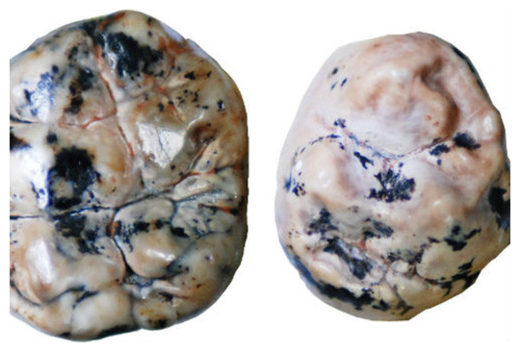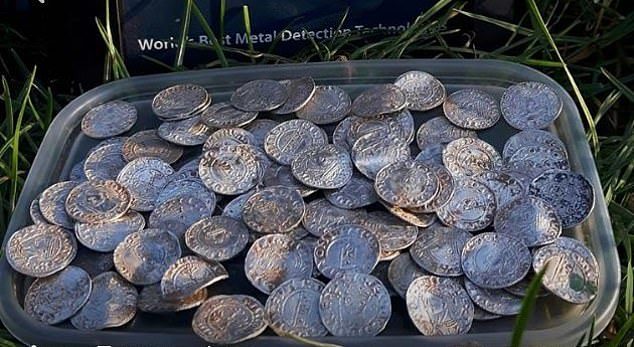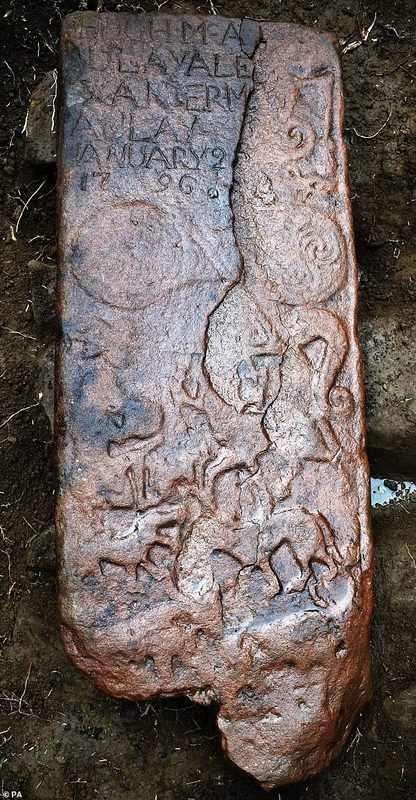OF THE
TIMES


The British Museum announced the discovery of the coins from a pivotal moment in English history on Wednesday. Some depict Harold II, the last crowned Anglo-Saxon king of England, and an almost equal amount show the man who replaced him after the Battle of Hastings in 1066, William the Conqueror, the first Norman king of England.
Gareth Williams, the museum's curator of early medieval coinage, said the hoard of 2,528 coins was unusually large and "massively important" in shining light on the history of the period.
"One of the big debates amongst historians is the extent to which there was continuity or change, both in the years immediately after the conquest and across a longer period," he said. "The coins help us understand how changes under Norman rule impacted on society as a whole."
Three of the coins have been identified as "mules", a combination of two types of coin - essentially an early form of tax-dodging by the moneyer, the person who made them.These coins have designs and language that relate to both Harold and William, and would have been easy to pass off as legal tender as the average Anglo-Saxon was illiterate and the stylised images of the kings looked similar.© Aaron Chown/PAIan Richardson, treasure registrar at the British Museum, holding a rare example of a mule coin.
They may have been illiterate but could they not differentiate between faces and symbols? Also, is it normal for two kings to have such similar coins? Does this assumption really explain what's going on?
The find was made in January in a farmer's field near the Chew Valley in Somerset by Lisa Grace and Adam Staples, a couple from Derbyshire who were teaching friends how to use their new metal detectors.
One of the friends came across a single William the Conqueror silver coin, "an amazing find in its own right", said Staples, something a detectorist might only find once in 30 years. "Two steps later, there was another signal and it was another coin. Then there were beeps everywhere, it took four or five hours to dig them all up."
They soon had a bucket containing a staggering number of coins, probably worth millions of pounds. The total hoard value would have been enough to buy a flock of 500 sheep in 1067-68, but its precise value today has yet to be revealed.
The legal process will involve a coroner's examination to confirm whether it is treasure. If it is, it will then be valued by an independent treasure valuation committee and museums will have to raise money to acquire the hoard. Interest has already been expressed by the Roman Baths and Pump Room in Bath.
The reward would then be shared between the land owner and the metal detectorists who made the discovery.
One of the most tantalising questions is why someone would bury so much money. Williams said the south-west of England was a violent place in the aftermath of 1066, with raids by the Welsh and the return of Harold's sons from Ireland.
"Imagine a period of instability with someone in charge of the country that not everybody actively supports and uncertainty in terms of the relationship with the continent," he said.
"It is the sort of circumstances in which anyone might choose to bury their money."

Comment: Catalan Today provides a bit more information on this curious festival: And from Wiki: So the real origins and meaning behind Aquelarre/Akelarre remain pretty obscure, but it does seem to retain some similarities with other celebrations around the world: